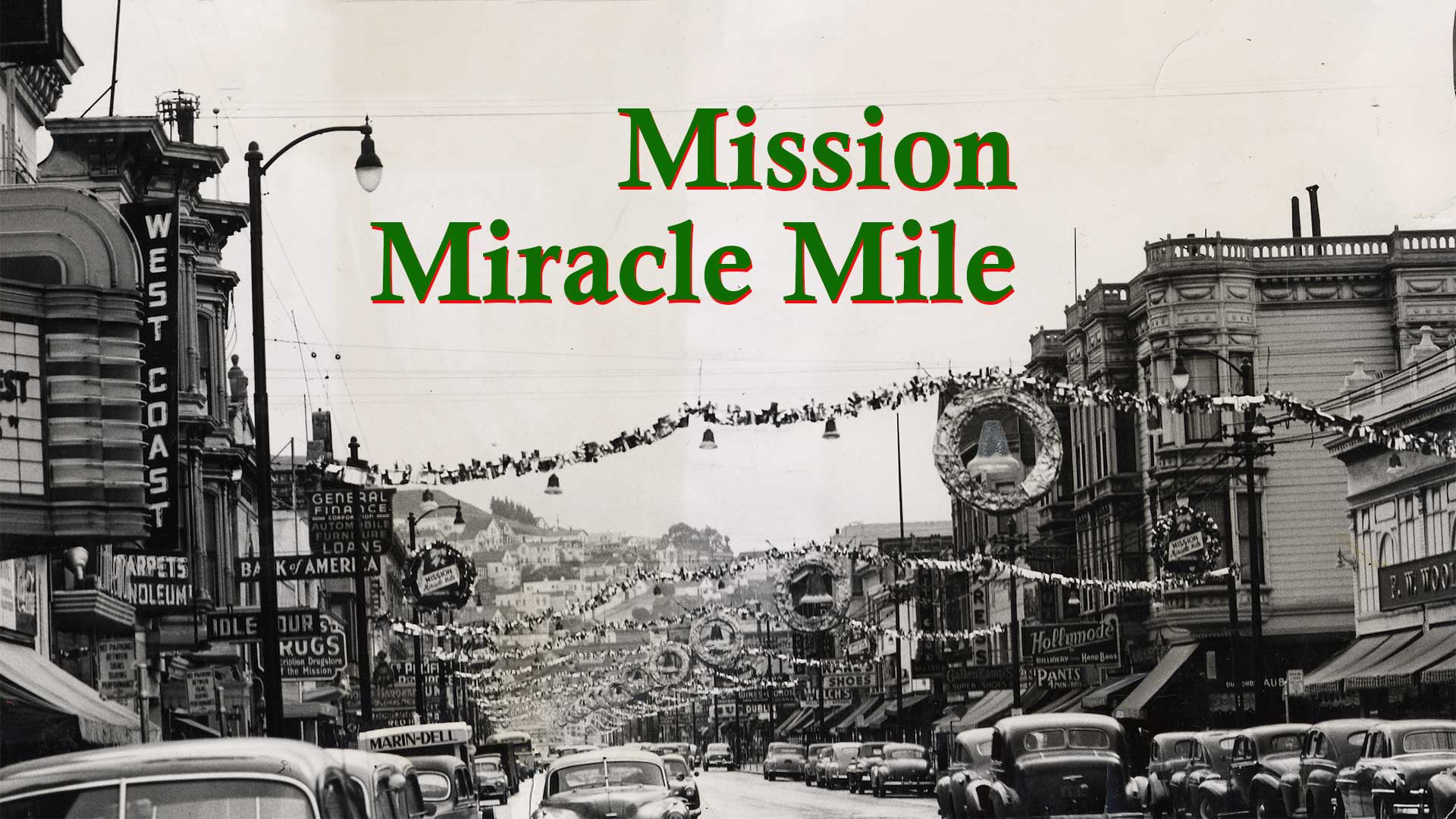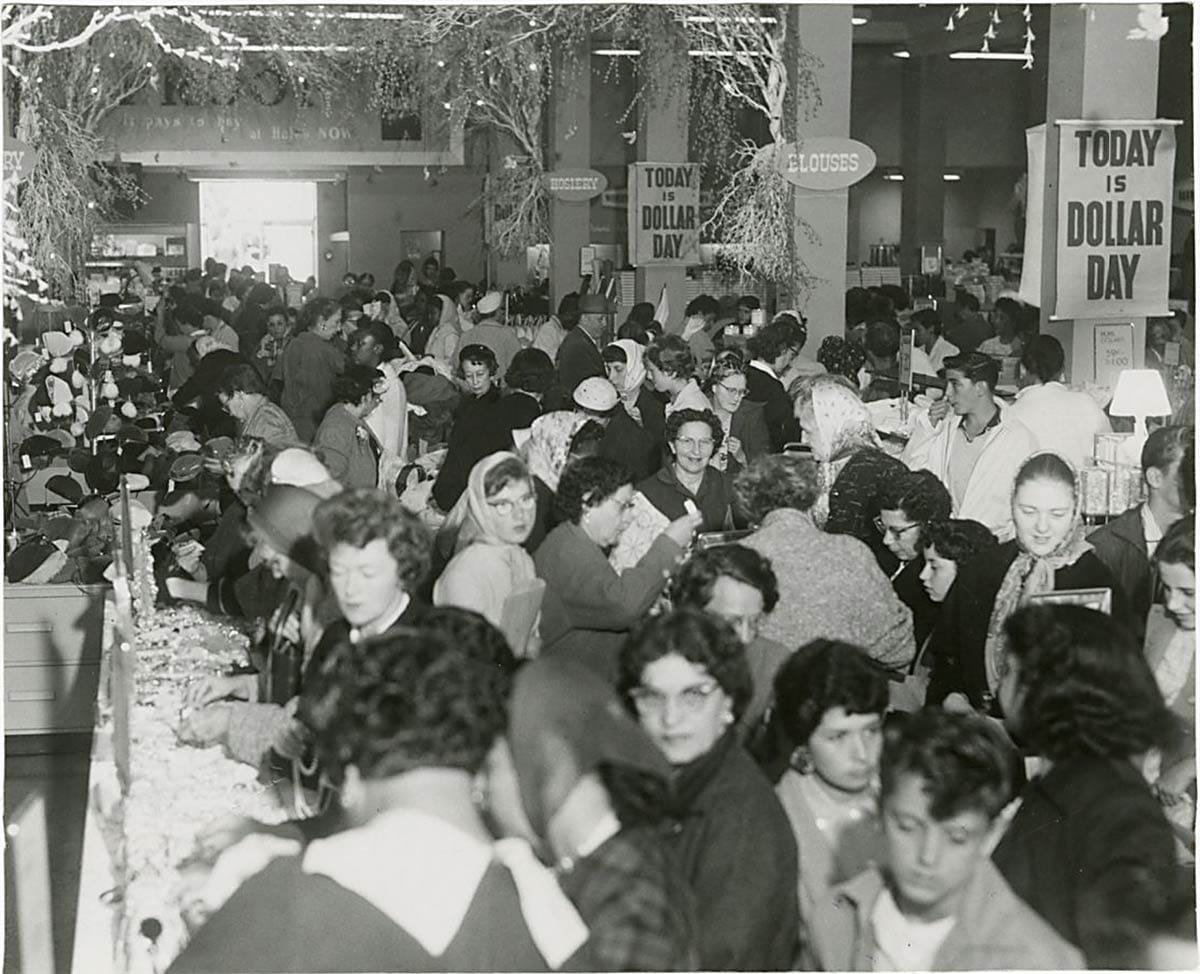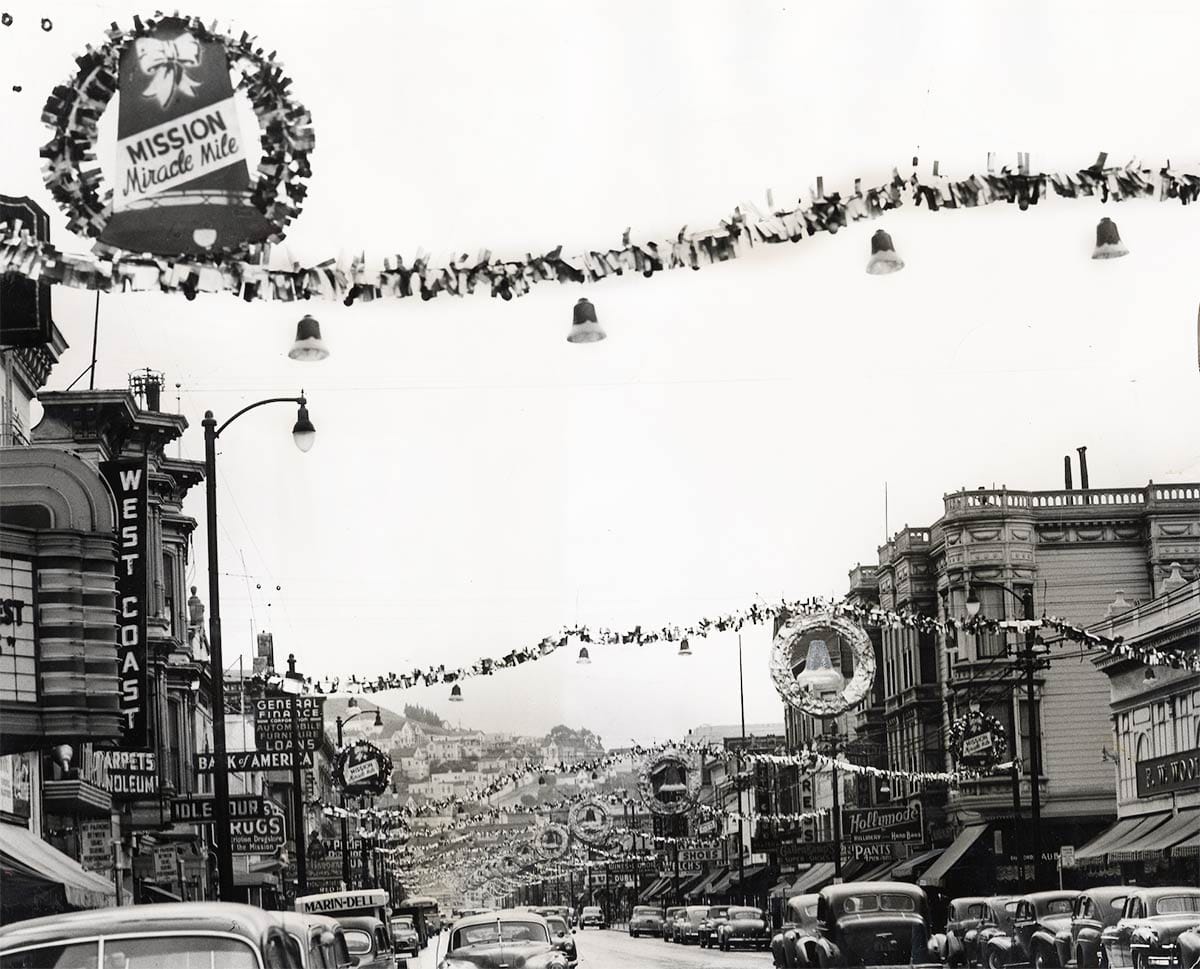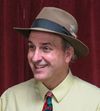Mission Miracle Mile
In 1949, Mission merchants sweet-talked San Francisco's mayor into a special status.

I had the indignity of Christmas shows thrust upon me by my streamers while I was looking for something to watch on Halloween. Yes, I could have been the grumpy old man making the expected grumpy comments.
Instead, I have decided to go for it.
Although Nancy is not thrilled, each night over the past two weeks I have watched Frosty the Snowman or It’s a Wonderful Life or Miracle on 34th Street (which has held up well), or A Royal Corgi Christmas (yikes), because if I do not leaven in some Hallmark Channel rom-com dreck, I will run out of classics before Thanksgiving even hits.
I have not done as well getting my Christmas shopping started. I may go with the strategy of gift-buying only in my Richmond District neighborhood, something I made a point of doing a few years back. Perhaps I could just start and finish the job at (unpaid endorsement coming here) Green Apple Books.

I think Clement Street does pretty well in December, but we are a long way from when folks used to buy fur coats, barbecues, dinette sets, and refrigerators along their neighborhood “Miracle Mile.”
Mile of Miracle Bargains
In 1929, some real estate booster in Los Angeles came up with a catchy title for Wilshire Boulevard where developer A. W. Ross was turning bean fields and oil wells into a posh shopping district near Hancock Park. The name “Miracle Mile” started appearing in ads in January of that year.

An alternative name, “The White Spot,” was pitched for the strip about the same time. That never caught on, understandably, as what does that even mean?
By April of 1929, other shopping corridors in booming, sprawling Los Angeles started calling themselves “the next Miracle Mile.” Pasadena said it had one. By 1930, Kansas City, Missouri, said it had one. After World War II, merchant groups in almost every American town raced to claim the alliterative title as their own. Coral Gables in Florida had a Miracle Mile. So did Tucson, Arizona, and Manhasset, Long Island, and, yes, even San Francisco jumped on the bandwagon.
Geary Boulevard tried on the crown in 1945, with Joe Ferrara using the name for his planned row of modern buildings where the Odd Fellows Cemetery had been between Arguello Boulevard and Stanyan Street.

Even with the opening of the mighty Coronet Theater on the block in November 1949, one block of new stores on Geary Boulevard did not a mile make.

Seventy-six years ago this month, in 1949, big ole Mission Street got in the game. With the conclusion of streetcar track-removal and repaving, and the approach of the holiday season, the Mission Street Merchants’ Association decided they wanted to be known as on San Francisco’s true Miracle Mile.
They kissed up to Mayor Elmer Robinson to officially proclaim Mission Street between 15th and Army (Cesar Chavez ) streets “Mission Miracle Mile.” The merchants emphasized that this title was “permanent.”

Mission Street then was already chock-a-block with clothing, furniture, hardware, and smaller department stores, plus a number of big movie theaters. The San Francisco News trumpeted that the street “supplies anything anybody, living or dead, might need for his personal or family use.” (A strange endorsement...)
The Mission was denser and had a more populous pool of shoppers than the Richmond District. Geary Boulevard never stood a chance.

Mission Miracle Mile signs were posted up and down the street. A Mission Miracle Maid beauty contest was held. Neon-lit archways were proposed at each end of the boulevard. (Ironic, since the city’s best-known street arches had been scrapped just a few years before.) A 2½ hour parade ran down Mission on November 19, 1949 with the National Guard, fraternal eagles, elks, masons, and moose marching with merchants and the municipal band. The mayor, of course, was guest of honor.
Unsurprisingly, Mission Street Merchants won that year’s Christmas decoration contest held by the Retail Merchants Association of the Chamber of Commerce. A gold cup was the prize (wonder where that is today) and, of course, His Honor Mayor Elmer Robinson presented the cup. (Another photo opportunity for the album!)

The name and the marketing stuck through the 1950s. Semi-annual Miracle Mile “Dollar Day” sales drew thousands to Mission Street stores each year.

But, as you have probably heard, things change.
It is the usual story: suburbs and shopping malls began dominating in the 1950s. Mission Street lost its big retailers and shifted to discount, outlet, and true dollar stores.
One block over, Valencia Street is doing pretty darned good, but sadly in recent years Mission Street’s most successful business models have been drug dealing and selling stolen goods on the sidewalk. Everyone from the mayor on down is trying to figure out how to fix Mission Street.
Every few years a local merchant with gusto tries to revive the idea of Mission Miracle Mile. We all know it will take more than a photo album, some signs, and a beauty pageant this time around.
There are only 42 shopping days until Christmas. Try to stay off the internet and give your local merchants some love.
Woody Beer and Coffee Fund

I am on my way to Brooklyn to see nephew #1 get married. Back next week. Perhaps we can meet sometime during the holiday season to spend some of the (La)bounty of the Woody Beer and Coffee Fund?
Here, I will make it easy for you. I will be at the Plough and the Stars at 116 Clement Street on Saturday, November 29 from 5-8-ish to celebrate my 60th birthday. My mom might even be there to tell you what a great son I am. You can meet my impressive brothers. Drop by if you can and I will get your Guinness or sparking water thing.
Sources
Ad by Glenn N. Deuel,, “Wilshire Blvd. Exchange,” Los Angeles Times, January 27, 1929, Part V, pg. 1.
“About Real Estate,” Kansas City Star, June 22, 1930, Section D, pg. 1.
Robert O’Brien, “San Francisco,” San Francisco Chronicle, September 8, 1945, pg. 9.
Ad for Ferrara’s at 3545 Geary Street, San Francisco Chronicle, January 15, 1948, pg. 7.; Richmond Banner, August 23, 1946, pg. 1.
“Miracle Mile on Mission Street,” San Francisco Chronicle, October 18, 1949, pg. 34.
“Now it’s Official,” San Francisco Call-Bulletin, November 17, 1949, pg. 11.
“Arches to Designate Mission Miracle Mile,” San Francisco Chronicle, December 4, 1949, pg. 10.
“Mission Miracle Mile ‘World's Largest Store,’” San Francisco News, April 2, 1952, pg. 40.

